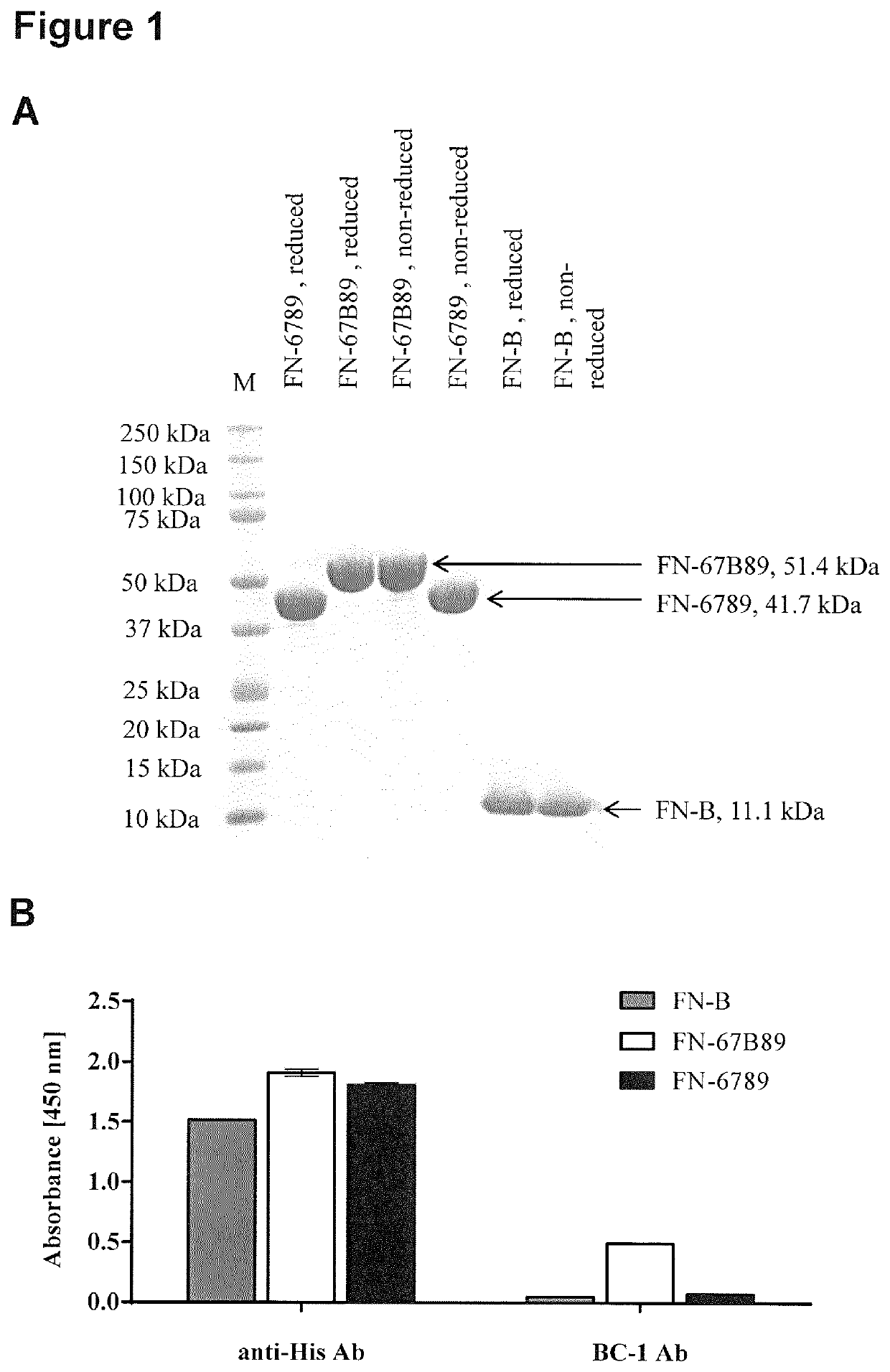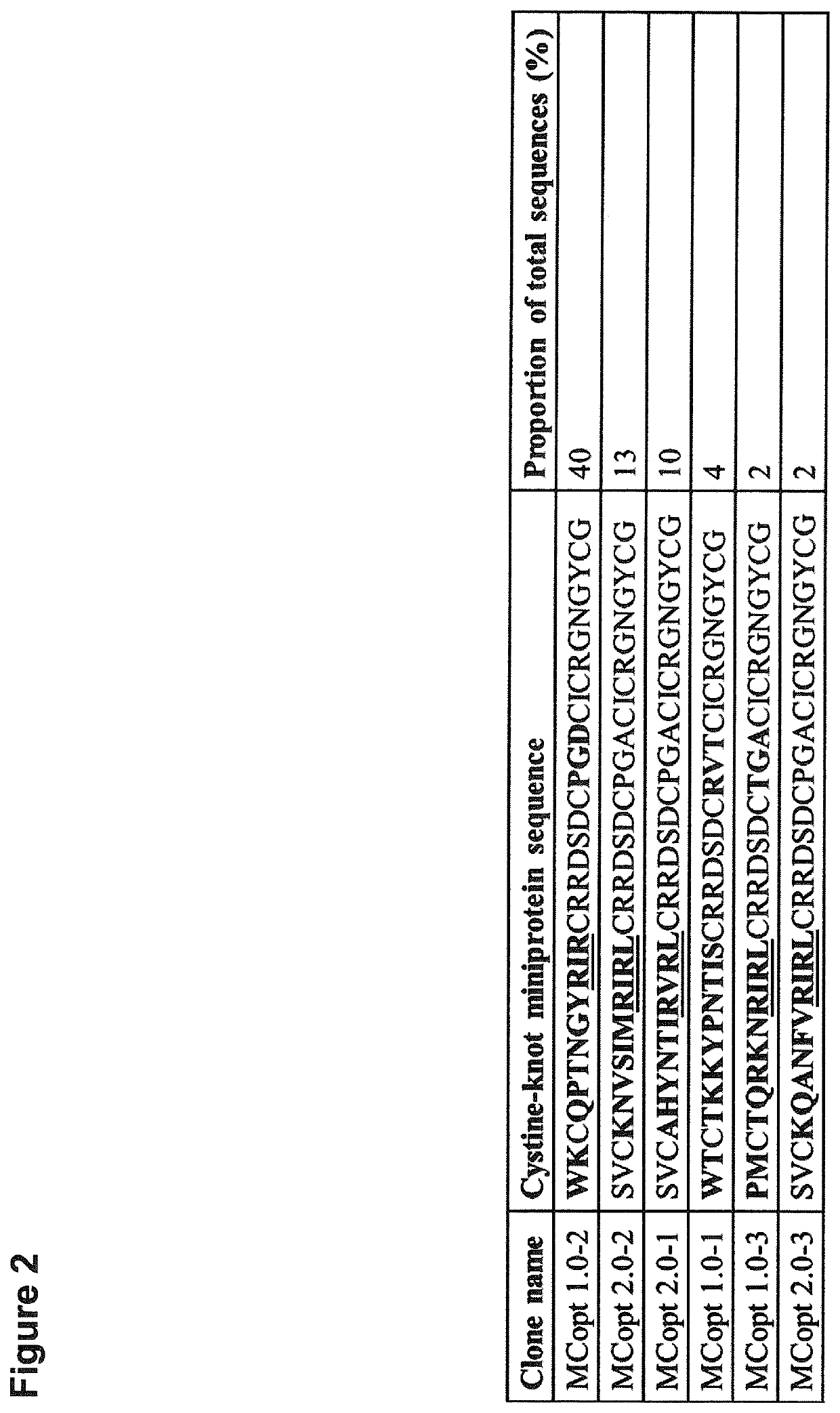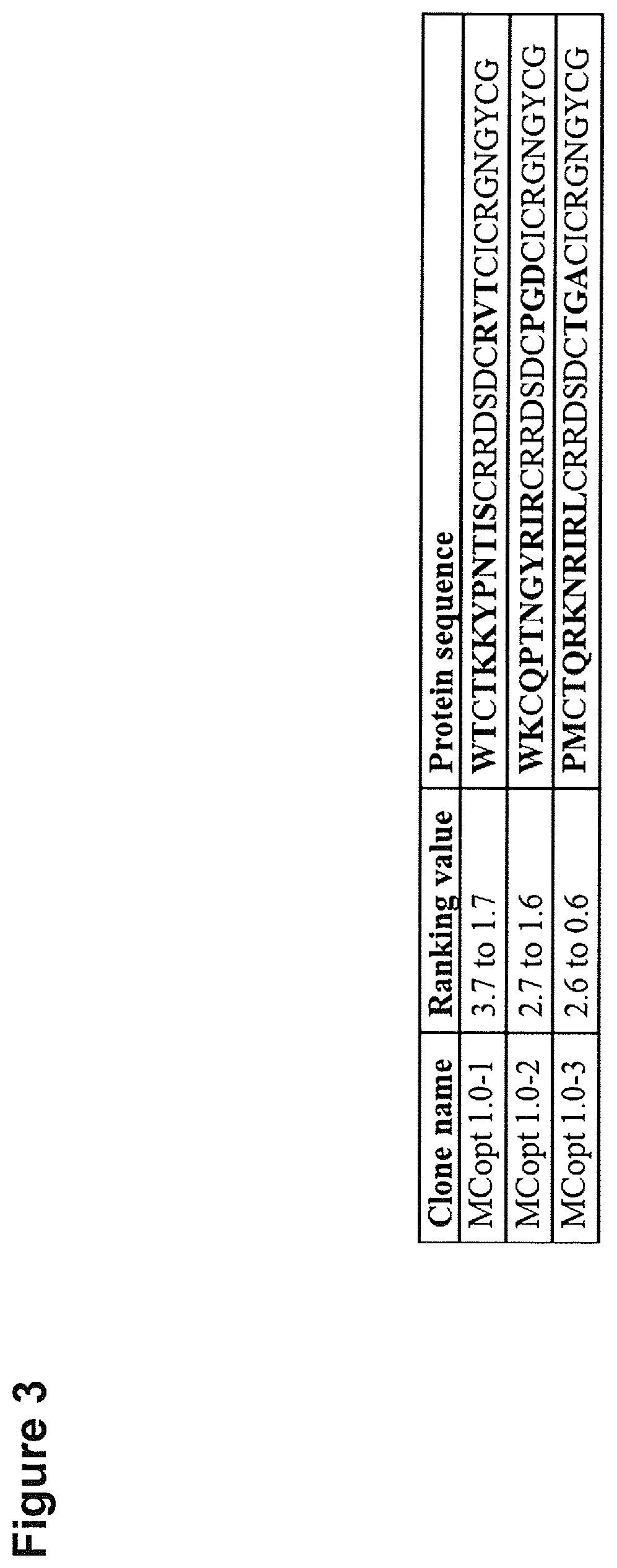Compositions and Methods for Diagnosis and Treatment of Cancer
a technology of fibronectin and extra domain b, which is applied in the direction of peptide/protein ingredients, peptide sources, instruments, etc., can solve the problems of radiotherapy, chemotherapy and conventional surgical procedures, severe toxic side effects to healthy tissue, and poor selectivity, and achieves reasonable affinities, increased binding strength, and high specificity of fibronectin extra domain b
- Summary
- Abstract
- Description
- Claims
- Application Information
AI Technical Summary
Benefits of technology
Problems solved by technology
Method used
Image
Examples
example 1
and Methods
[0308]Target Expression, Purification and Biotinylation
[0309]Recombinant human fibronectin EDB either as a single domain (FN-B, Uniprot ID P02751, isoform 7, amino acid E1265-T1355) or flanked by its surrounding type III domains (FN-67B89, amino acid G1080-E1455) served as target protein in this study while domains 6-9 without EDB (FN-6789) was used as control. All variants were expressed in E. coli with a c-terminal hexahistidine (H6) tag and purified via immobilized metal ion affinity chromatography (IMAC) and size exclusion chromatography (SEC). For this, codon-optimized DNA sequences were synthesized by Thermo Fisher Scientific, cloned into pET-21a expression vector (Novagen) and introduced into E. coli BL21 (DE3) cells (Agilent). Proteins were expressed in a 750-mL scale at 30° C., 120 rpm until an OD600 of approximately 0.7 was reached. For induction of protein production, 750 μL 1 M IPTG were added to the main-culture and incubated at 25° C., 120 rpm overnight. Cel...
example 2
and Selection of EDB-Specific Ligands
[0338]Since cystine-knot miniproteins have been shown to be ideally suited as agents for tumor imaging (Kimura et al. 2009; Moore et al. 2013; Miao et al. 2009; Soroceanu et al. 1998; Veiseh et al. 2007, Nielsen et al. 2010; Hackel et al. 2013; Zhu et al. 2014), we used the open chain sequence of Momordica cochinchinensis trypsin inhibitor-II (oMCoTI-II) as basis for a combinatorial phage library construction to select target binding ligands (Hernandez et al. 2000). Our first library (MCopt 1.0) comprises sequences with randomized amino acids in the first loop, scattered positions in the third loop and two variable residues in front of the first cysteine. Cystine-knot miniprotein sequences were genetically fused to the major coat protein (pVIII) of M13 phages. In addition, a second library (MCopt 2.0) was developed with randomization in the first loop of the sequence and a presentation of proteins via the minor coat protein (pIII) of M13 phages. ...
example 3
ty Analysis of Enriched Cystine-Knot Miniprotein Candidates
[0340]We next focused on target binding specificity of the six remaining cystine-knot miniproteins using in-house produced EDB target proteins (FN-B and FN-67B89) as well as off-target protein (FN-6789) and different control proteins (milk powder, streptavidin and bovine serum albumin). FN-6789 represents a perfect corresponding off-target protein, because fibronectin lacking extra domain B is expressed by many different cell types (Mao and Schwarzbauer 2005). All candidates display a reasonable EDB target binding, being equally high for recombinant FN-B and FN-67B89 target proteins (FIG. 4). Variants chosen on the basis of the common R-1 / V-R-(L) motif (MCopt 1.0-2 / -3 and MCopt 2.0-1 / -2 / -3) showed medium to low off-target and control protein signals. While MCopt 1.0-2 and MCopt 1.0-3 were already identified in MCopt 1.0 hit identification, MCopt 2.0-1, -2 and -3 were solely identified from the MCopt 2.0 pool on the basis of ...
PUM
| Property | Measurement | Unit |
|---|---|---|
| molecular-mass | aaaaa | aaaaa |
| dissociation constant | aaaaa | aaaaa |
| dissociation constant | aaaaa | aaaaa |
Abstract
Description
Claims
Application Information
 Login to View More
Login to View More - R&D
- Intellectual Property
- Life Sciences
- Materials
- Tech Scout
- Unparalleled Data Quality
- Higher Quality Content
- 60% Fewer Hallucinations
Browse by: Latest US Patents, China's latest patents, Technical Efficacy Thesaurus, Application Domain, Technology Topic, Popular Technical Reports.
© 2025 PatSnap. All rights reserved.Legal|Privacy policy|Modern Slavery Act Transparency Statement|Sitemap|About US| Contact US: help@patsnap.com



